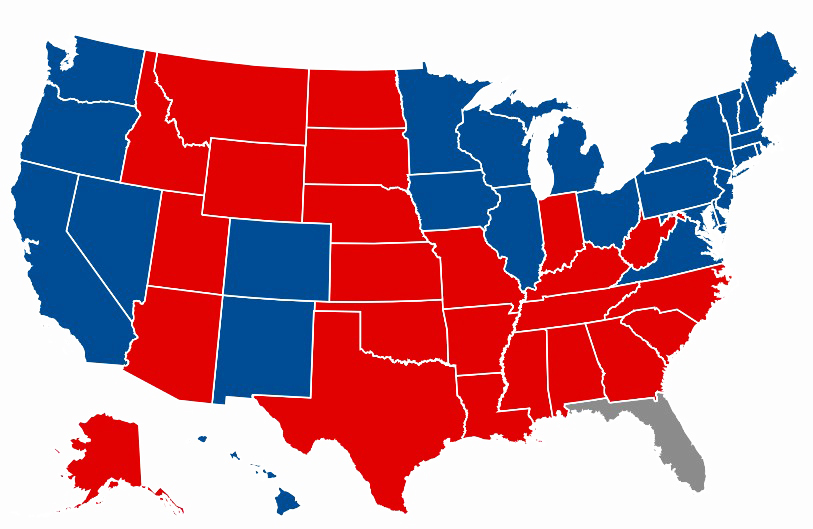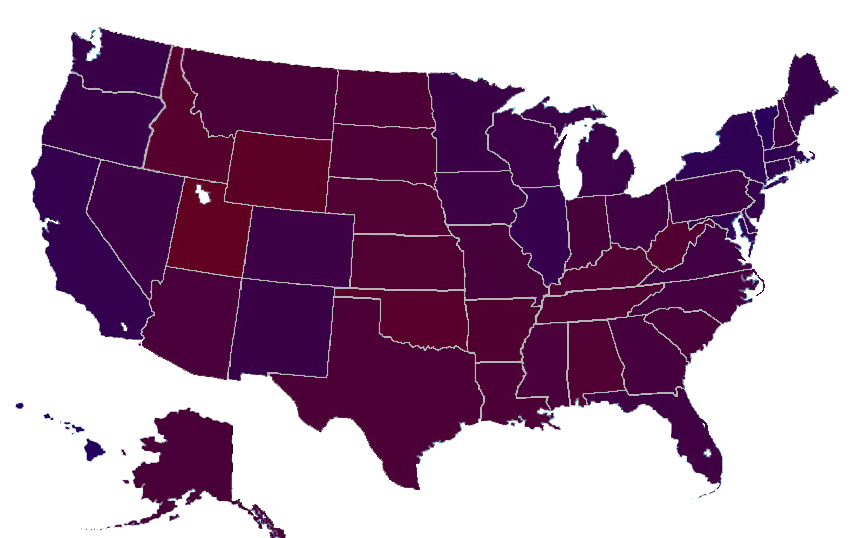David Stairs
“It’s not a blue world anymore, Max.” —Chief Blue Meany speaking to his assistant at the end of Yellow Submarine
The aftermath of the 2012 election got me thinking about color. The typical red/blue dichotomy that the media has devised to represent our apparent “bad blood” has been an all-too-familiar-display since Election Day, to the extent that it must appear to people from other parts of the world that Americans fall in to one of two primary-color races: Blue Meanies or Red Ragers.  image courtesy of POLITICO
image courtesy of POLITICO
A more realistic version of this “deep division” in our electorate is the Average Margin of Victory map as calculated over the last five presidential elections. Here there are many intermediary shades of purple, red orange, and blue violet that depict us as a more dynamic, less color-challenged society. But even this does not go far enough.

image courtesy of Wikipedia
I propose an altogether new theory of color. When I created a new map by mixing RGB red and RGB blue according to the voting percentages of both parties in each state, rather than a blue/red divide I got something more akin to the colors of hemaglobin, deep shades of purplish red-blue. In this model most-bluish Hawaii, which voted 71% Democrat and 28% Republican, is a rich venous blue, while reddest Utah, which went 73% Republican and 25% Democrat, turns a deep cardio red. Florida, ending in a dead heat, is bruise purple. 
Perhaps the most interesting thing about this third map is that it portrays us not in the contrarian clichés of the media, but as more alike than different. Critics of red/blueism have been saying for years that such Manichean representations, not unlike the electoral college, convey a false picture, overlooking an often super minority of each state’s voting population. In the days and months ahead, it will do us all good to remember that, thanks to nature, there are more than just two blood types and a wide array of colors. Whether you think of yourself as “red blooded” or, possibly, as a “blueblood,” if we apply this new model to our political spectrum we may find that, Rh factor aside, we have more in common than anyone is willing to admit.
David Stairs is the founding editor of Design-Altruism-Project











Leave a Reply
You must be logged in to post a comment.